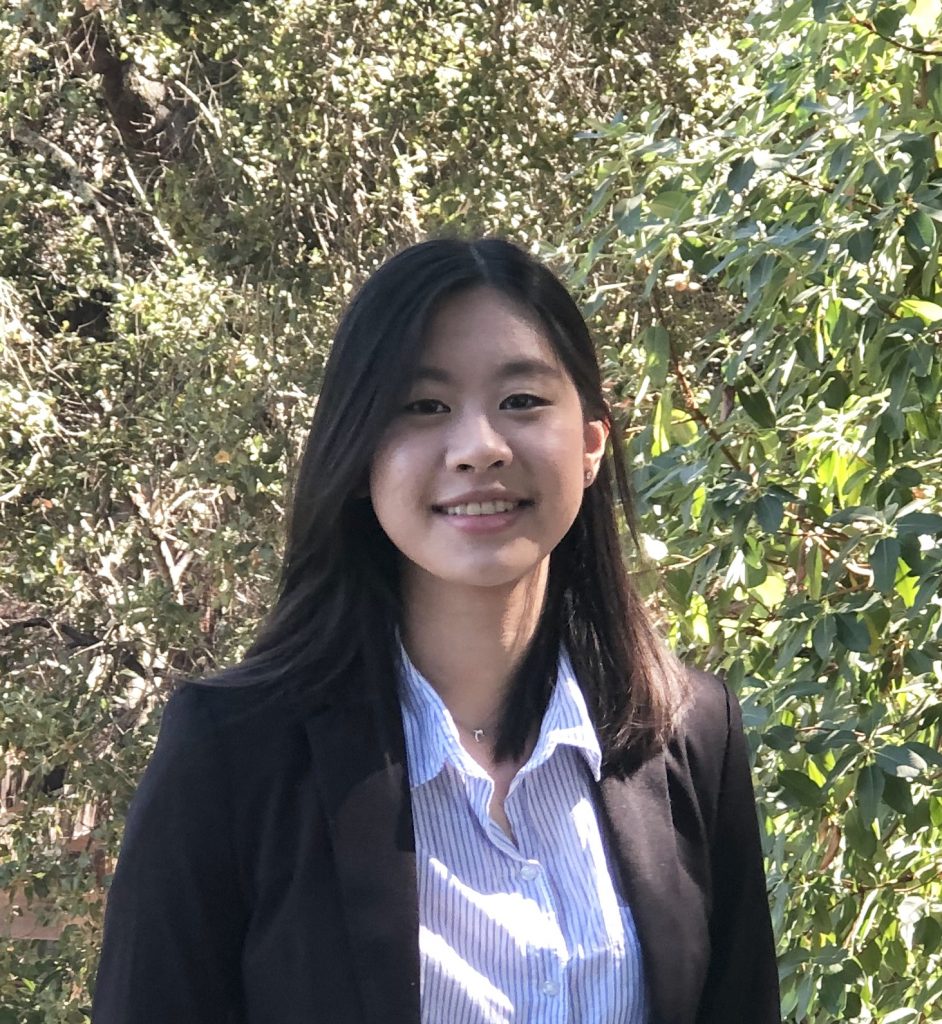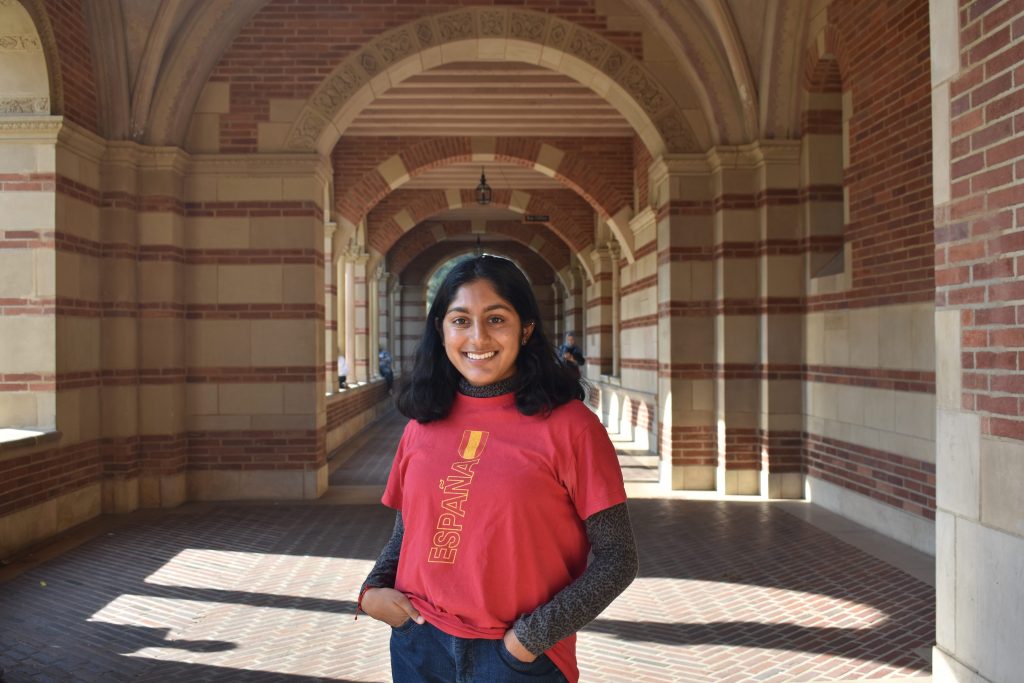
Rhea Churi
IRIS by The H.E.A.L.L Initiative
Mentor: Jayathi Murthy
Year: Senior
Major: Neuroscience, Global Health
Problems of inequality within the healthcare system are often overlooked. We expect the doctors, nurses, and other medical practitioners are doing the best of their ability to treat us. However, for many marginalized communities, this is far from the truth. As of right now, we can see how the COVID-19 pandemic, which was thought to be ‘the great equalizer’ has instead highlighted discrimination within the medical sphere. The H.E.A.L.L (Health Equity and Accessibility for ALL) Initiative aims to combat this through the innovative new IRIS app/website. IRIS is a patient advocacy forum that would function as a public reviewal tool of hospitals in your area to share instances of medical racism/sexism/homophobia and more. People would be able to rate and share their own reviews of their hospital visit and access and support resources that reduce healthcare disparities. This project is unique because it publicizes the voices of underrepresented patients and shares their experiences of medical discrimination to the general population. It will draw awareness to those who suffer from institutionalized violence in medicine and promote activism and change for a better, egalitarian healthcare system in the United States.
Results: Final Presentation, Quad Chart

Kaushik Devireddy
Crypto Firewalls: Secure Standards for Connected Cryptocurrency Wallets
Mentor: Venky Harinarayan
Year: Sophomore
Major: Computer Science
Crypto wallets were designed to be used by the individual in an air-gapped hardware wallet. However, as enterprises begin accepting cryptocurrencies as payment over the internet, and building programmable APIs and applications on top of crypto wallets (banking, custody, trading, etc.), these wallets will increasingly require connectivity to other wallets through full nodes and application servers. This brings along a slew of security challenges unique to connected crypto wallets: ensuring an infected application server can’t exfiltrate wallet funds, enforcing white/blacklists for transaction types and destinations, creating access-control lists for cold-storage transfers, etc. My project focuses on developing a set of open firewalling standards for the Bitcoin and Ethereum protocol to solve these challenges, and implementing them in software as an open-source project. This is unique as current network security solutions do not take into context the transaction-level details to protect wallets. This work will result in greater adoption of cryptocurrency for individuals and enterprises, as well as usher in the era of programmable, crypto-finance applications.
Results: Quad Chart, Final Presentation

Zifan He
P2P File Backup on Data Transmission and Storage Trading
Mentor: Leonard Kleinrock
Year: Junior
Major: Computer Science
As the development of cloud storage leading by Google and iCloud, backup on Internet become more and more popular. However, it has several disadvantages. First and foremost, you have to pay for these services, which may be a significant budget when backing up large data file. Second, the speed of downloading your stored file is mainly dependent on the distance between cloud server (affect latency) and PC and the bandwidth. Third, privacy concerns still occur. In the proposed project, utilizing P2P technology, it is possible to store backups on the nearest computers, and upload/download process would be faster correspondingly. To download files, an idea similar to mapReduce can be used, where file segments can be processed between computers and aggregate onto user’s PC. Although there is a company called BuddyBackup working on the similar project, the proposal will focus on how to efficiently segregate files and distribute them, collect and combine files during download, and an ecosystem that allows users to trade unused disk storage. All of these have not been accomplished by BuddyBackup. If the project were accomplished, users can backup files with relative low price or even free, and the disk restoration would be quite fast.
Results: Quad Chart and Presentation

Olivia Loh
Gesture-Controlled Automation for Remote Filmmaking
Mentor: Jeff Burke
Year: Senior
Major: Computer Engineering
Social distancing due to the pandemic poses a great challenge to the film industry, a highly social, collaborative, and practical field. Due to social-distancing regulations, film production teams have resorted to remote filmmaking to limit the number of people on set. This would allow for a majority of the crew to work from home, as remote filmmaking software facilitates high-quality end-to-end live streaming service. Nevertheless, there are still some limitations to remote filmmaking, such as the lack of direct interaction between filmmakers and the physical set. I would like to propose a project that can improve on existing remote filmmaking technology by introducing a gesture-control component to live streaming. Filmmakers can make hand signals through their webcam (interpreted by a gesture-recognition machine learning model) and certain equipment on set will react accordingly, as if the filmmakers were actually present at the set. Smart gesture control has not been fully incorporated in remote production as of now. Incorporating gesture control can bring more convenience to the workflow of the set, as the nature of filmmaking is literally “hands-on” and production crews often rely on direction through hand signals. Furthermore, such gesture-control automation technology can apply to and benefit many other fields that require remote work as well.
Results: Final Presentation, Quad Chart

Maya Raman
Improved Load-Balancing Algorithms for efficient energy usage in Data Centers
Mentor: Rajit Gadh
Year: Junior
Major: Computer Science, Environmental Systems & Society
As the world’s use of the Internet increases, the data centers our daily actions rely on are using more and more energy. Most data centers only operate at less than 50% capacity, wasting energy that could be saved if idle servers were turned off. In my project, I want to explore the best load-balancing algorithms for data centers to serve requests efficiently and turn off unused machines to save energy, while maintaining an acceptable quality of service. I will split the algorithms into those used for large-scale (Google, Facebook, etc.) and small-scale data centers. While the topic of efficient load-balancing algorithms has been extensively studied, this project is unique because it explores the best algorithms for differently-scaled data centers, and considers the benefit of turning off machines. I will first conduct a literature review to determine these algorithms, and will then simulate them using CloudSim software with variables such as amount of traffic, amount of virtual machines, and amount of off servers, to determine which algorithms save the most energy for each type of data center. Finally, I will propose mechanisms for how data centers can implement these energy-saving changes based on their scale and load.
Results: Quad Chart and Presentation

Emir Izat Rashid
Misunderstood Information: Grassroots, Public Figures, and Behavioral Interventions in Misinformation.
Mentor: Amit Sahai
Year: Senior
Major: Applied Mathematics
Social media has transformed how societies communicate and interact with each other. Although social media undoubtably has led to great strides in connecting the world, it also ushered in an age of mass misinformation – shaping a significant component of public discourse largely based on untruthful claims. Contemporary literature on misinformation observed the spread of misinformation through two approaches, the bottom-up approach, i.e misinformation propagated by participatory actors, and the top-down approach, i.e misinformation spread by public figures or institutional actors. However, there is still an unclear methodology on measuring the impact of top-down involvement on grassroots driven misinformation or vice-versa, identifying key agents responsible for different forms of misinformation spread, and analyzing the impact of behavioral interventions on misinformation such as tagging some posts as harmful. This study will investigate these unanswered questions by integrating social network analysis and information retrieval techniques to :- a) observe the relationship between online discourse and user-based construction of social networks, b) identify key agents by measuring centralities on user-based social networks and their associated impacts on discourse, and c) evaluate the impact of behavioral interventions on social networks, whether it strengthens or weaken misinformation-driven networks.
Results: Quad Chart and Report
